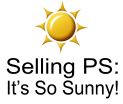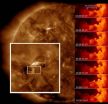(Press-News.org) Measured in billionths of a meter, self-assembling nano-sized devices designed to carry drugs and imaging agents into the body are revolutionizing medicine by improving drug solubility and bio-distribution, providing a platform for combining targeting and imaging agents, and enabling membrane barriers to be crossed as well as making drug and imaging agent combination therapies possible.
Self-assembling nano devices are now enlisted in the nanomedicine revolution, a story as told by researchers from Duke University and the University of Southern California in an article in the current TECHNOLOGY & INNOVATION, Proceedings of the National Academy of Inventors ™. (http://www.ingentaconnect.com/content/cog/ti/2011/00000013/00000001)
Their report covers two classes of self-assembled, nanoscale medical delivery devices currently used to transport drugs and also imaging materials across physiological barriers that they, acting by themselves, would be unable to cross.
"Nanoscale self-assembly devices are complex structures organized from simpler subcomponents - either naturally occurring or engineered - which assume complex structures difficult to attain by chemical synthesis," said the paper's corresponding author Dr. Ashutosh Chilkoti, professor of biomedical engineering at Duke University. "Their disassociation can be triggered by external stimuli, which serve as mechanisms to release therapeutic payloads."
According to Dr. Chilkoti and his co-authors, Dr. Mingan Chen and Jonathan R. McDaniel of the Duke University Department of Biomedical Engineering, as well as Dr. J. Andrew MacKay of the University of Southern California Department of Pharmacology and Pharmaceutical Sciences, many biological events rely on structures that self-assemble or disassemble based on environmental changes or physiological needs. Such natural self-assemblies used in nanomedicine rely on multiple weak forces, such as those associated with viral capsids and proteins.
Engineered self-assemblies used in nanomedicine come in over five groups of structural shapes, including the micellar nanostructure.
"We have recently developed a novel strategy that utilizes micelles self-assembled from recombinant polypeptides after attaching doxorubicin, a cancer drug, to deliver the drug," explained Dr. Chilkoti, who is also the director of the Duke University Center for Biologically Inspired Materials and Material Systems.
According to Dr. MacKay, a co-corresponding author of the report, the stability of micelles is important to their success or failure as drug delivery systems.
"The stability of micelles has thermodynamic and kinetic components," he said. "All factors that influence micellar stability can be tuned at the genetic level. Thus, we believe that genetically encoded polypeptide micelles are likely to play an increasing role in the design of next generation nanoscale carriers of drug and imaging agents."
In their report, the authors evaluate the structural and physiochemical properties, as well as the potential applications, of each type of structure.
###
The National Academy of Inventors ™ recognizes and encourages inventors who have a patent issued from the U.S. Patent and Trademark Office, enhances the visibility of university technology and academic innovation, encourages the disclosure of intellectual property, educates and mentors innovative students, and encourages the translation of the inventions of its members to benefit society.
The editorial offices of TECHNOLOGY and INNOVATION are located at the University of South Florida, Office of Research and Innovation, 3702 Spectrum Blvd., Suite 175, Tampa, Florida, 33612. Tel: (813) 974-3348. Email jlowry@research.usf.edu
News Release by Randolph Fillmore, Florida Science Communications, www.sciencescribe.net
Super-mini vehicles carry therapeutics and imaging agents into body with mega results
Nanoscale, self assembly structures exploited for 21st century nanomedicine
2011-06-08
ELSE PRESS RELEASES FROM THIS DATE:
ExpertPages.com - The Premier Expert Witness Site - Announces the Release of ExpertFinder, its Free iPhone/iPad App
2011-06-08
ExpertPages.com, the first and leading online directory for expert witnesses and consultants in litigation and forensic matters, today announced the release of its much anticipated iPhone and iPad ExpertFinder App. ExpertFinder enables attorneys and legal professionals to effortlessly and effectively identify and contact highly qualified experts from the palm of their hand.
The ExpertFinder App is available to lawyers and legal professionals for free in the App Store. The no cost download can be accessed on iTunes at http://expertpages.com/press/expertfinder.htm.
...
Drug shows promise in prostate cancer spread to bone
2011-06-08
ANN ARBOR, Mich. — A new drug to treat prostate cancer shows early promise, particularly against tumors that have spread to the bone, a multi-site study shows.
The drug Cabozantinib is designed to target mainly two important pathways linked to the growth and spread of prostate cancer. The drug had the most effect on tumors that had spread to the bone.
"Not only did three-quarters of bone scans have partial or complete resolution, but this was accompanied by improvement in bone pain and decreased need for narcotic use," says lead study author Maha Hussain, M.D., FACP, ...
Randy Heinitz Introduces Market Snapshot for the Palm Springs Real Estate Market Utilizing Real Time MLS Data; Get Your Property's Current Value Quickly Online
2011-06-08
Selling PS: It's So Sunny!, one of the Palm Springs area's most creative real estate marketing brands, has added Market Snapshot to their already user friendly website.
In an ongoing effort to enhance the consumer's experience on the website (http://www.SellingPS.com), Market Snapshot provides valuable and timely data, allowing consumers to simply click on the icon and instantly compare home prices in their neighborhood and get community and school information as well.
Market Snapshot provides up-to-the minute MLS graphical reports - automatically delivered and ...
Air quality worsened by paved surfaces
2011-06-08
New research focusing on the Houston area suggests that widespread urban development alters weather patterns in a way that can make it easier for pollutants to accumulate during warm summer weather instead of being blown out to sea.
The international study, led by the National Center for Atmospheric Research (NCAR), could have implications for the air quality of fast-growing coastal cities in the United States and other mid-latitude regions overseas.
The reason: the proliferation of strip malls, subdivisions and other paved areas may interfere with breezes needed to ...
NASA sees a hot tower in first tropical depression of the eastern Pacific
2011-06-08
The Tropical Rainfall Measuring Mission satellite called TRMM has the ability to see rainfall rates and heights of thunderstorm clouds within a tropical cyclone, and data from the satellite confirmed a "hot tower" near the center of the first tropical depression of the eastern Pacific Hurricane Season.
Tropical Depression 1E formed when the low pressure area called System 91E strengthened overnight. Today, June 7, Tropical Depression 1E (TD1E) was located about 365 miles (590 km) south of Acapulco, Mexico near 11.6 North and 100.0 West. It had maximum sustained winds ...
'Wrong'-time eating reduces fertility in fruit flies
2011-06-08
PHILADELPHIA - Dieticians will tell you it isn't healthy to eat late at night: it's a recipe for weight gain. In fruit flies, at least, there's another consequence: reduced fertility.
That's the conclusion of a new study this week in Cell Metabolism by researchers at the Perelman School of Medicine at the University of Pennsylvania, in which they manipulated circadian rhythms in fruit flies and measured the affect on egg-laying capacity.
Lead author Amita Sehgal, PhD, John Herr Musser Professor of Neuroscience, stresses, though, that what is true in flies grown in ...
Universal flu vaccine clinical trials show promise
2011-06-08
GALVESTON, Texas — A universal influenza vaccine targeting a protein common to all strains of influenza A has safely produced an immune response in humans. If proven effective, the vaccine could eliminate the practice of creating a new flu vaccine annually to match predicted strains, with major implications for global health.
The results of the clinical trials, led by the University of Texas Medical Branch at Galveston in collaboration with biotechnology company VaxInnate and funded by $9.5 million grant from the Bill and Melinda Gates Foundation, were published today ...
NASA's solar dynamics observatory catches 'surfer' waves on the sun
2011-06-08
Cue the surfing music. Scientists have spotted the iconic surfer's wave rolling through the atmosphere of the sun. This makes for more than just a nice photo-op: the waves hold clues as to how energy moves through that atmosphere, known as the corona.
Since scientists know how these kinds of waves -- initiated by a Kelvin-Helmholtz instability if you're being technical -- disperse energy in the water, they can use this information to better understand the corona. This in turn, may help solve an enduring mystery of why the corona is thousands of times hotter than originally ...
Bat Blue Supports World IPv6 Day
2011-06-08
Bat Blue Corporation, a provider of end-to-end network and security technologies and services, today announced that it will participate in World IPv6 Day on June 8th. World IPv6 Day is being organized by the Internet Society to motivate organizations to prepare their services for IPv6 to ensure a successful transition as IPv4 addresses deplete.
Bat Blue has been a proponent of IPv6 for several years and has had IPv6 enabled on its extreme-performance IP network, BlueNET, since 2008. During this time, Bat Blue has invested in many IPv6 peering relationships with other ...
NASA sees the sun having a solar blast
2011-06-08
The Sun unleashed an M-2 (medium-sized) solar flare, an S1-class (minor) radiation storm and a spectacular coronal mass ejection (CME) on June 7, 2011 from sunspot complex 1226-1227. The large cloud of particles mushroomed up and fell back down looking as if it covered an area of almost half the solar surface.
The Solar Dynamics Observatory (SDO) observed the flare's peak at 1:41a.m. ET (0641 UT). SDO recorded these images (above) in extreme ultraviolet light that show a very large eruption of cool gas. It is somewhat unique because at many places in the eruption there ...
LAST 30 PRESS RELEASES:
65-year-old framework challenged by modern research
AI tool helps visually impaired users ‘feel’ where objects are in real time
Collaborating minds think alike, processing information in similar ways in a shared task
Routine first trimester ultrasounds lead to earlier detection of fetal anomalies
Royal recognition for university’s dementia work
It’s a bird, it’s a drone, it’s both: AI tech monitors turkey behavior
Bormioli Luigi renews LionGlass deal with Penn State after successful trial run
Are developers prepared to control super-intelligent AI?
A step toward practical photonic quantum neural networks
Study identifies target for disease hyper progression after immunotherapy in kidney cancer
Concordia researchers identify key marker linking coronary artery disease to cognitive decline
HER2-targeted therapy shows promising results in rare bile duct cancers
Metabolic roots of memory loss
Clinical outcomes and in-hospital mortality rate following heart valve replacements at a tertiary-care hospital
Too sick to socialize: How the brain and immune system promote staying in bed
Seal milk more refined than breast milk
Veterans with cardiometabolic conditions face significant risk of dying during extreme heat events
How plants search for nutrients
Prefrontal cortex reaches back into the brain to shape how other regions function
Much-needed new drug approved for deadliest blood cancer
American College of Lifestyle Medicine publishes official position on lifestyle medicine as a framework for delivery of high-value, whole-person care
Hospital infections associated with higher risk of dementia
Thyroid dysfunction during pregnancy may increase autism risk in children
Cross-national willingness to share
Seeing rich people increases support for wealth redistribution
How personalized algorithms lead to a distorted view of reality
Most older drivers aren’t thinking about the road ahead, poll suggests
Earthquakes shake up Yellowstone’s subterranean ecosystems
Pusan National University study reveals a shared responsibility of both humans and AI in AI-caused harm
Nagoya Institute of Technology researchers propose novel BaTiO3-based catalyst for oxidative coupling of methane
[Press-News.org] Super-mini vehicles carry therapeutics and imaging agents into body with mega resultsNanoscale, self assembly structures exploited for 21st century nanomedicine





